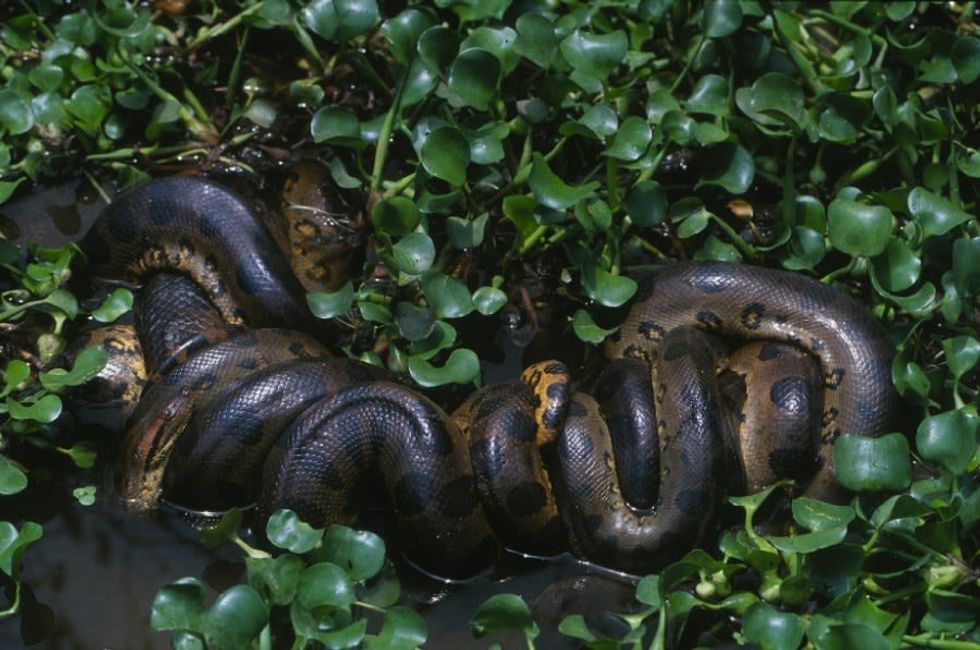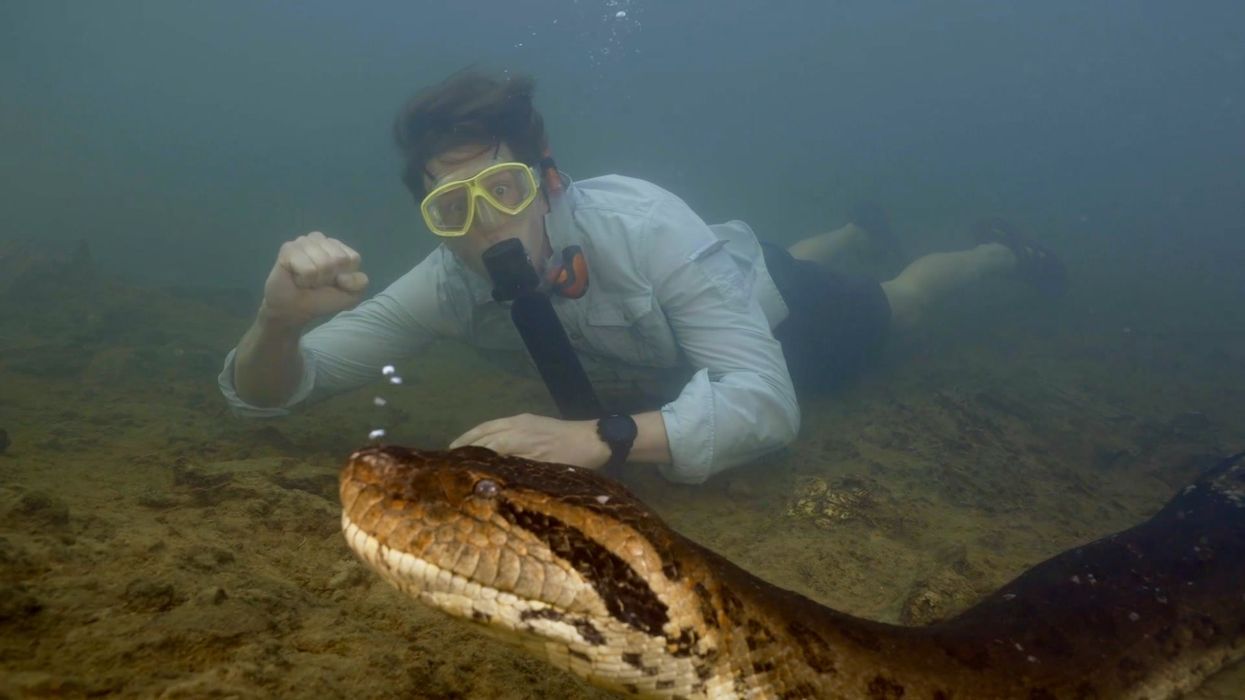Ellie Abraham
Feb 23, 2024
Snake measuring 26ft long discovered in Amazon Rainforest
Jam Press
A new and giant species of snake has been discovered in the Amazon after a filming crew found the world’s biggest anaconda.
Scientists are constantly making new and interesting discoveries about this planet’s animals, like a dolphin that has thumbs, which was located in Greece.
Experts believe that the largest snake ever recorded has been found in the Amazon rainforest in Ecuador by none other than Will Smith’s documentary film crew.
The snake, measuring 26ft-long and with a “human-sized” head, was discovered as the team, headed by Professor Bryan Fry of the University of Queensland, was on a mission to examine how oil drilling was affecting the animals of the area – a project done in collaboration with the Indigenous Waorani people from the Amazonian Region of Ecuador.
One Waorani man was bitten by a huge anaconda and almost dragged into the water before being freed with the help of many other people. Based on bite marks from its fangs, its jaws were much larger than any of the other snakes they had captured, and the team believed it was approximately 7.5 meters (24.6 feet) in length.

While filming the National Geographic documentary Pole to Pole with Will Smith for National Geographic, the team learned that male anacondas have 1000 per cent more lead and cadmium in their bodies than females.
In the study, the team explained that green anacondas from Ecuador are much larger than ones from Brazil, leading them to determine that they are two distinct species, with the larger given the name the northern green anaconda, due to their territories also spanning Colombia and Venezuela. The smaller was given the name, southern green anaconda.
They differ in DNA by about 5.5 per cent. In a statement, Fry explained: “To put it in perspective, humans differ from chimpanzees by only about 2 per cent.”
Speaking to IFL Science, Fry called the discovery the "biggest of his career" adding that the "only way it could be bigger is if I [scientifically] described a xenomorph that had just jumped out of Taylor Swift’s chest.”
Sign up for our free indy100 weekly newsletter
How to join the indy100's free WhatsApp channel
Have your say in our news democracy. Click the upvote icon at the top of the page to help raise this article through the indy100 rankings
Top 100
The Conversation (0)














